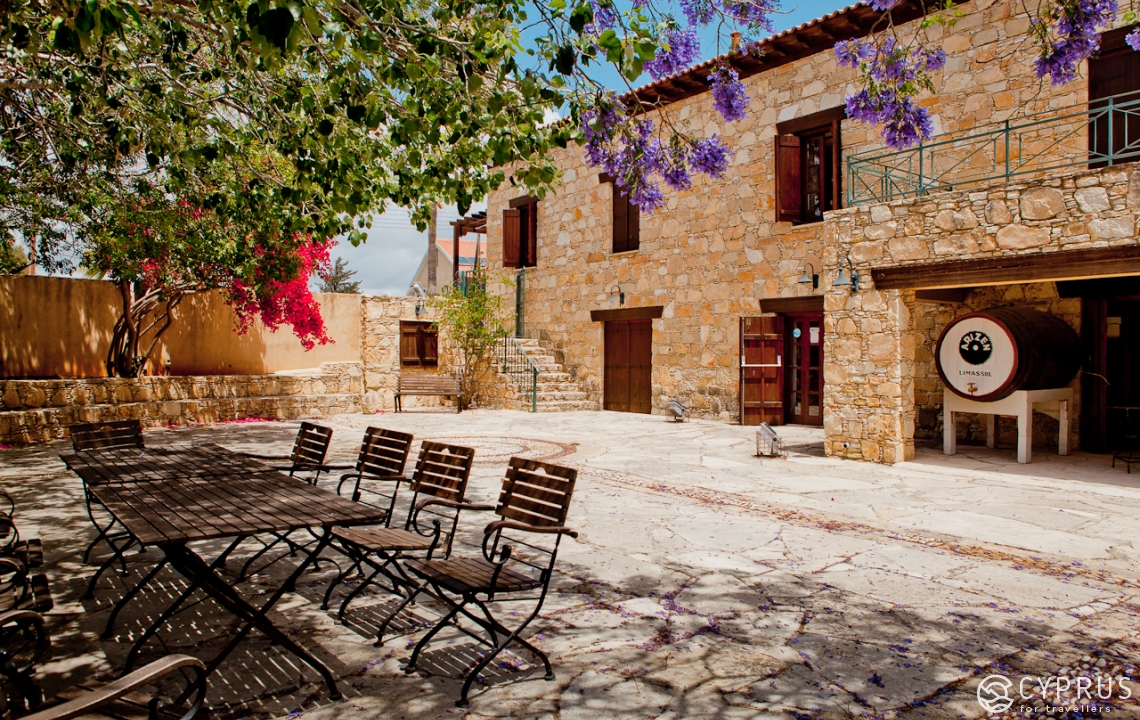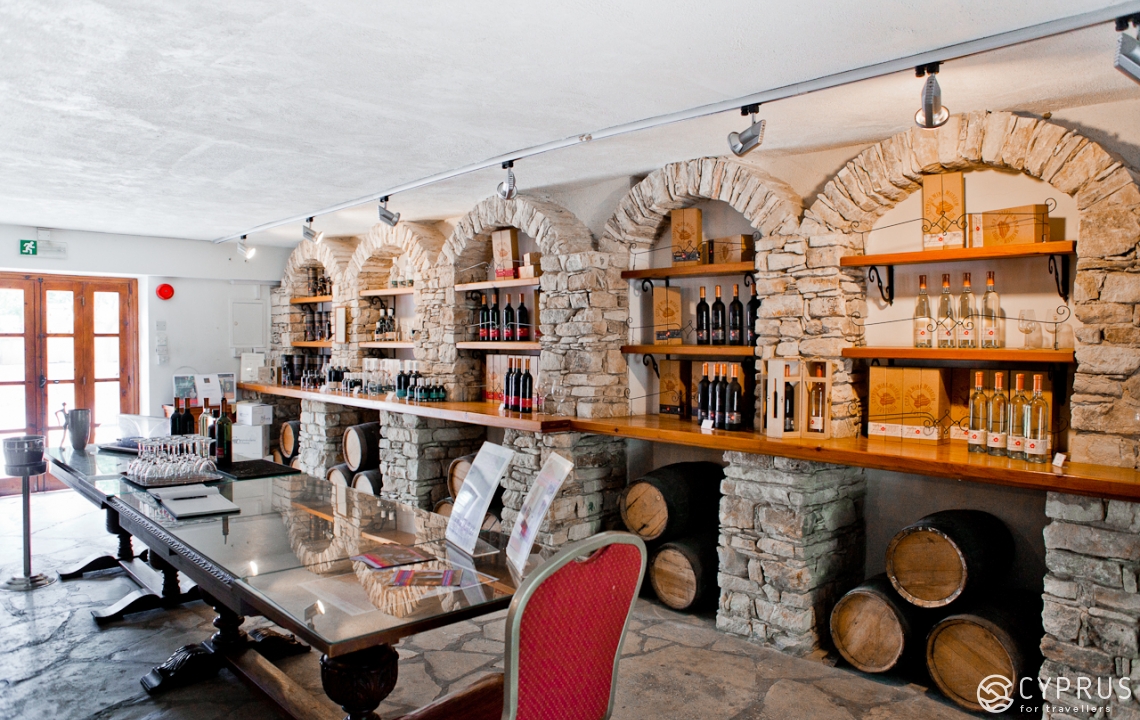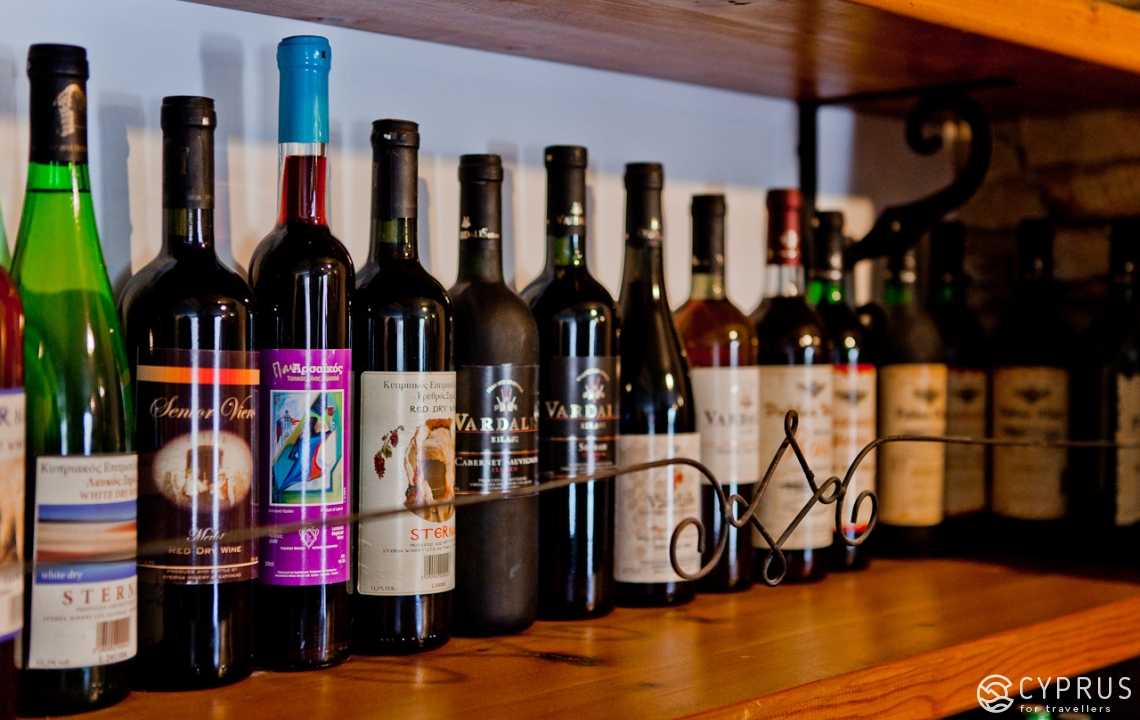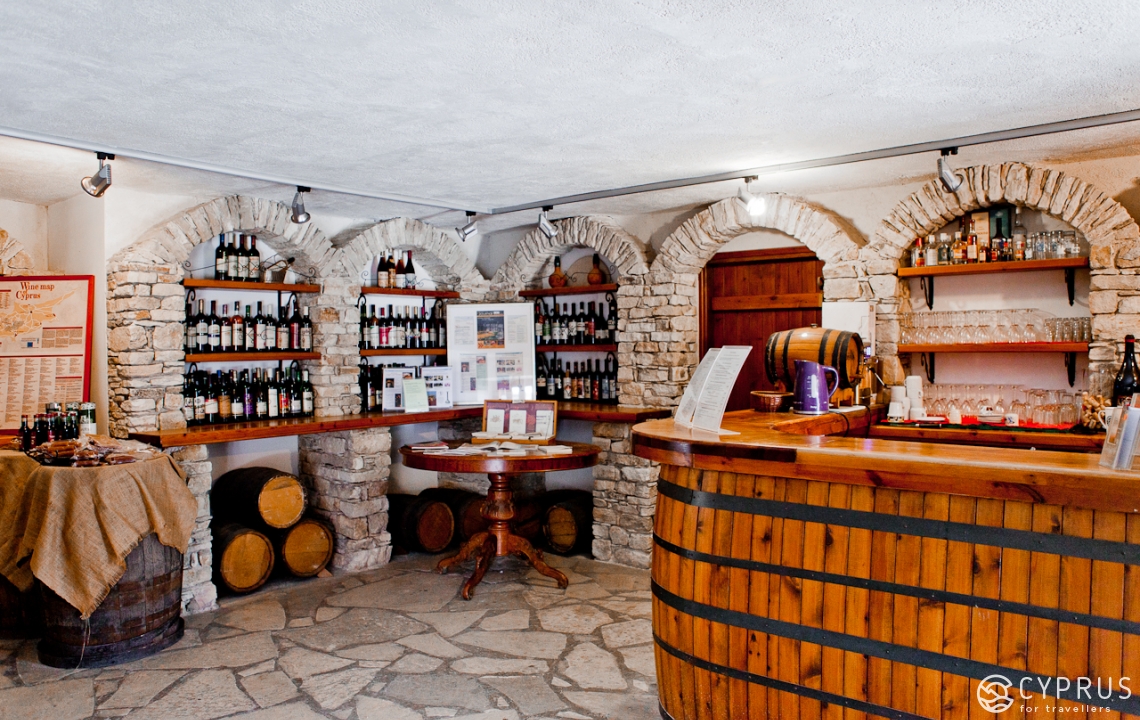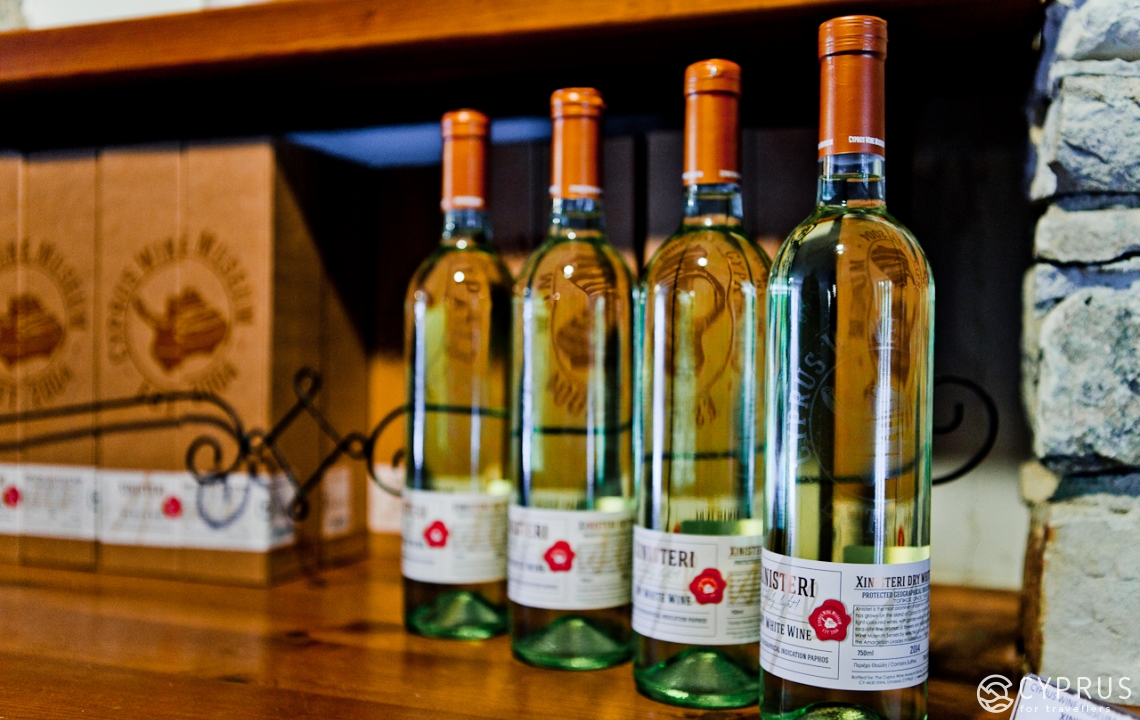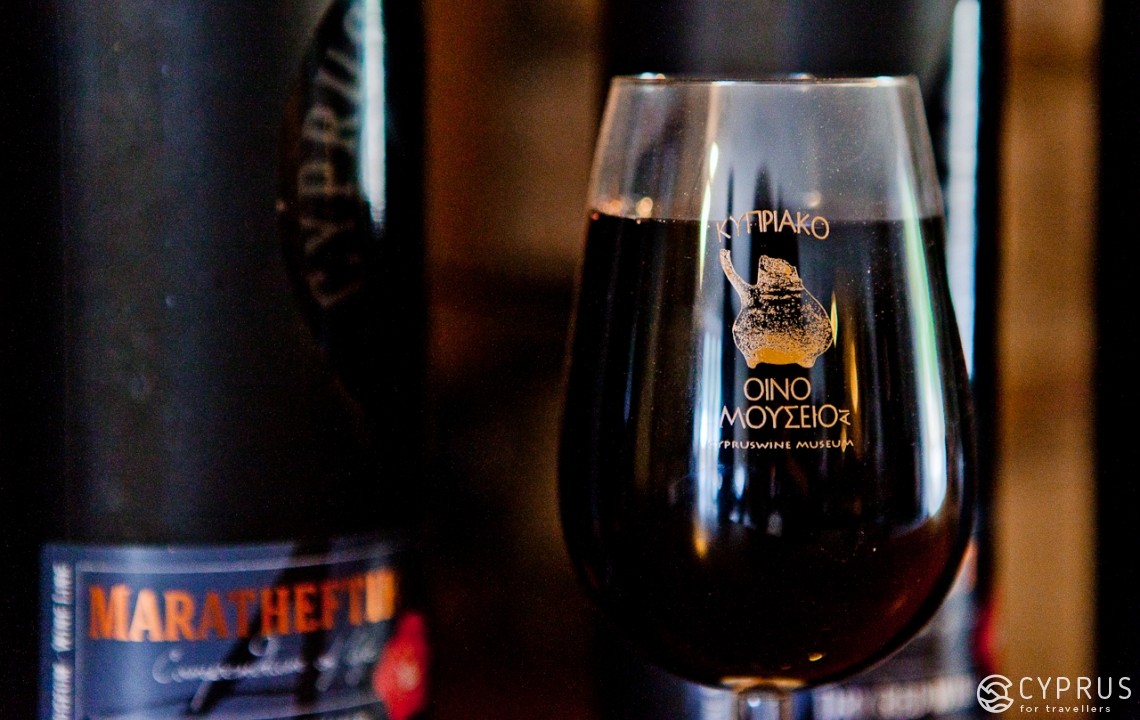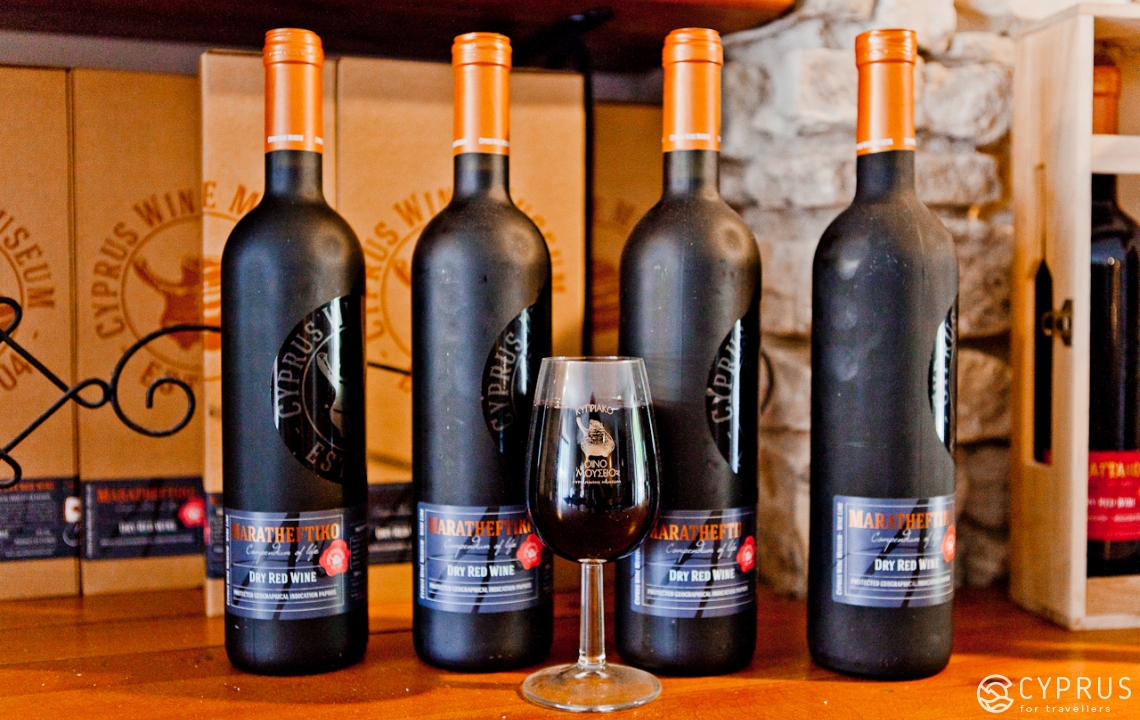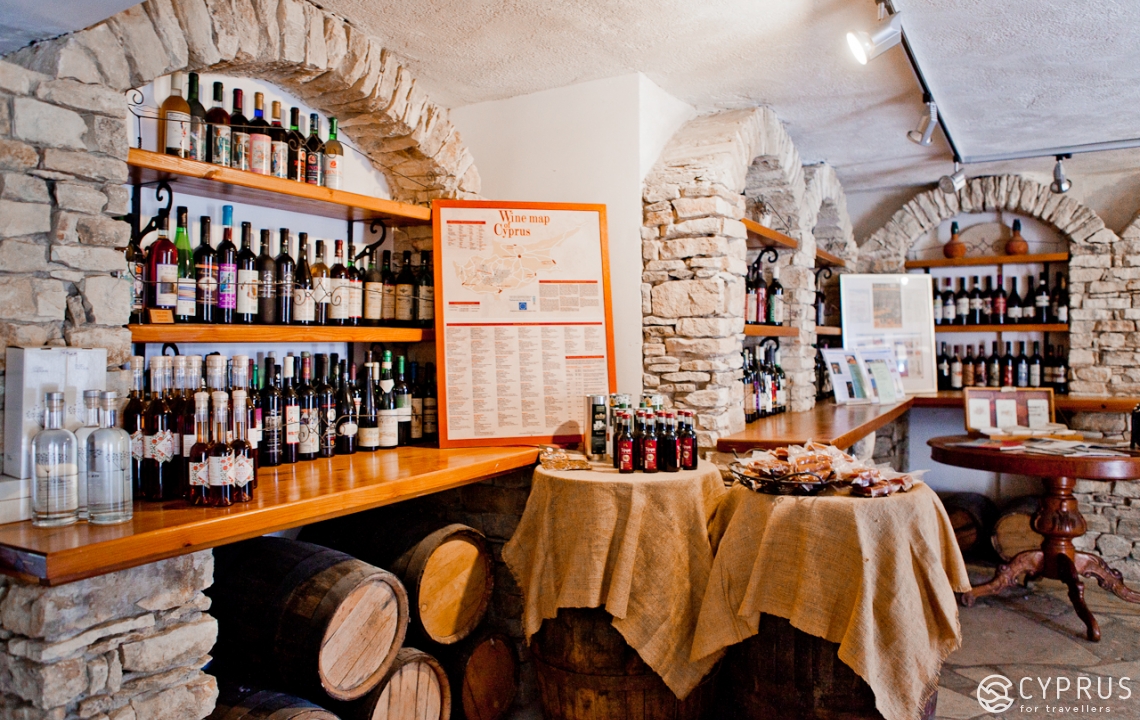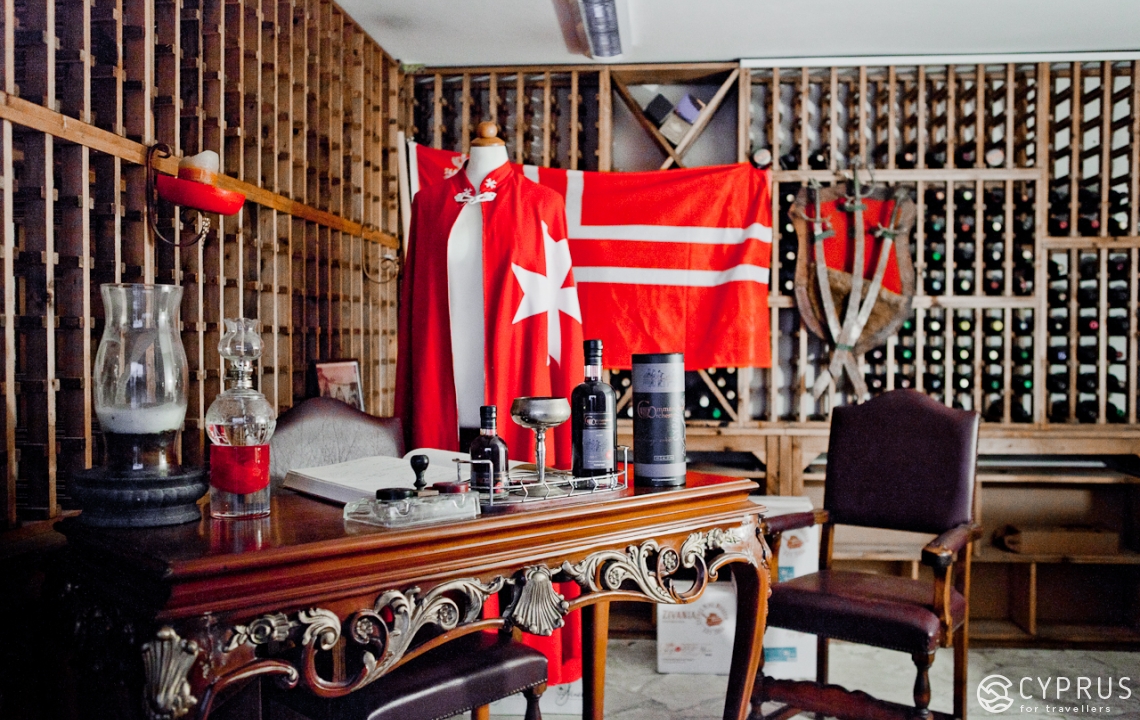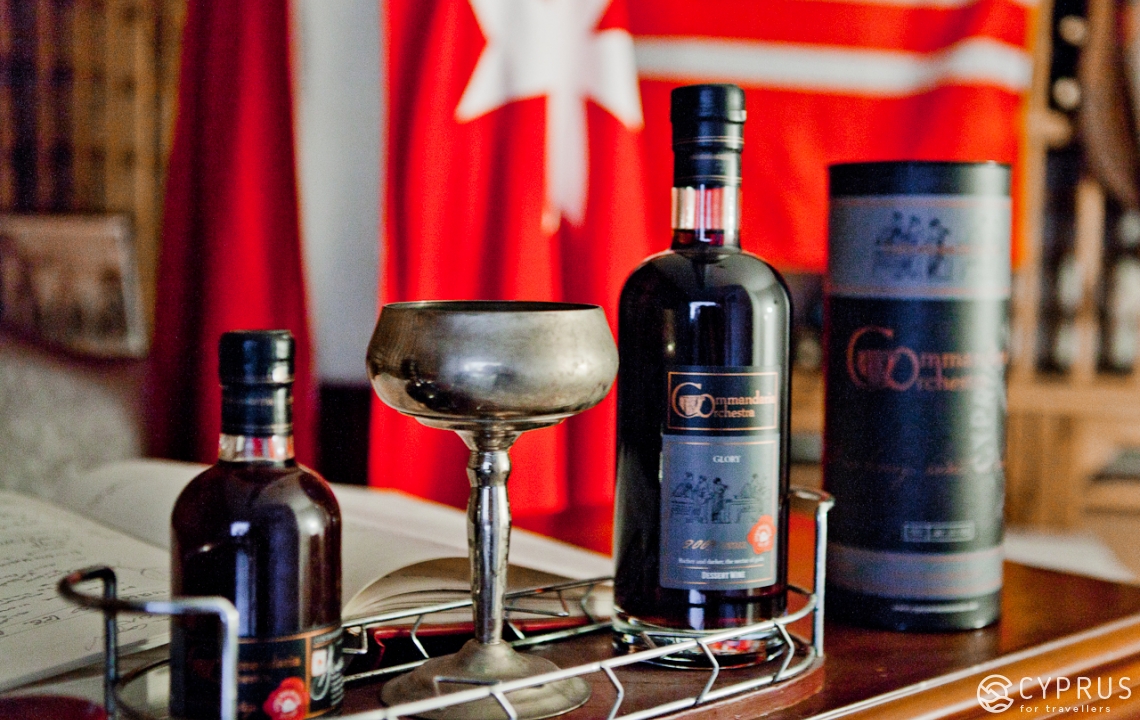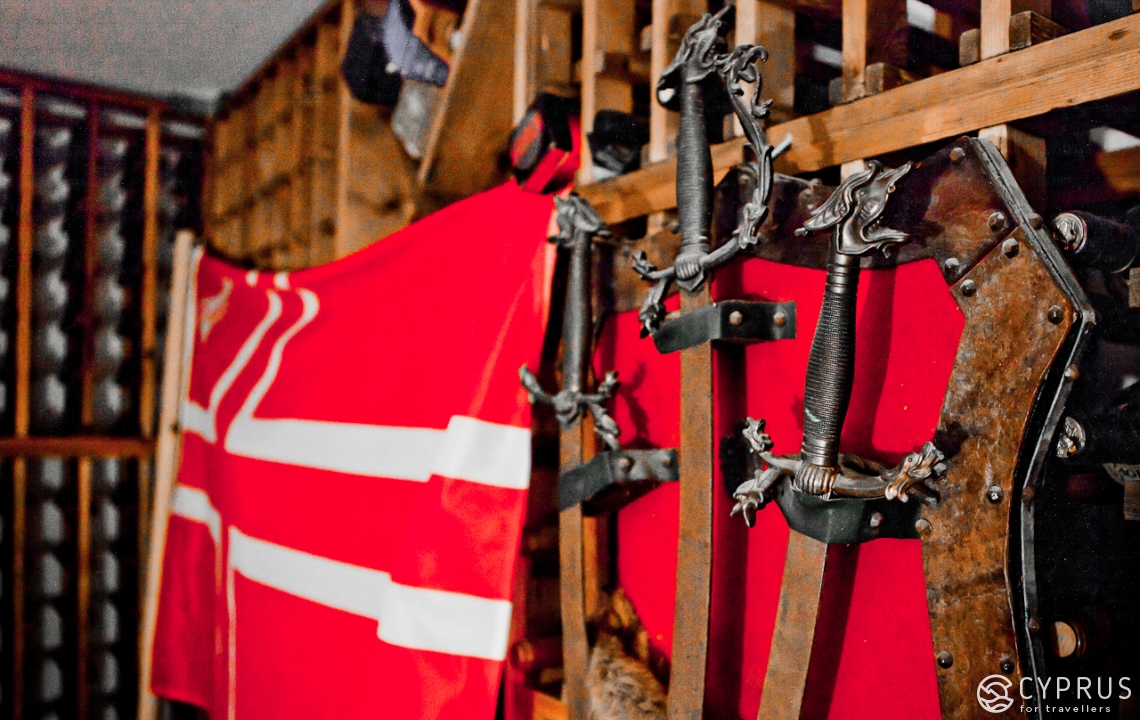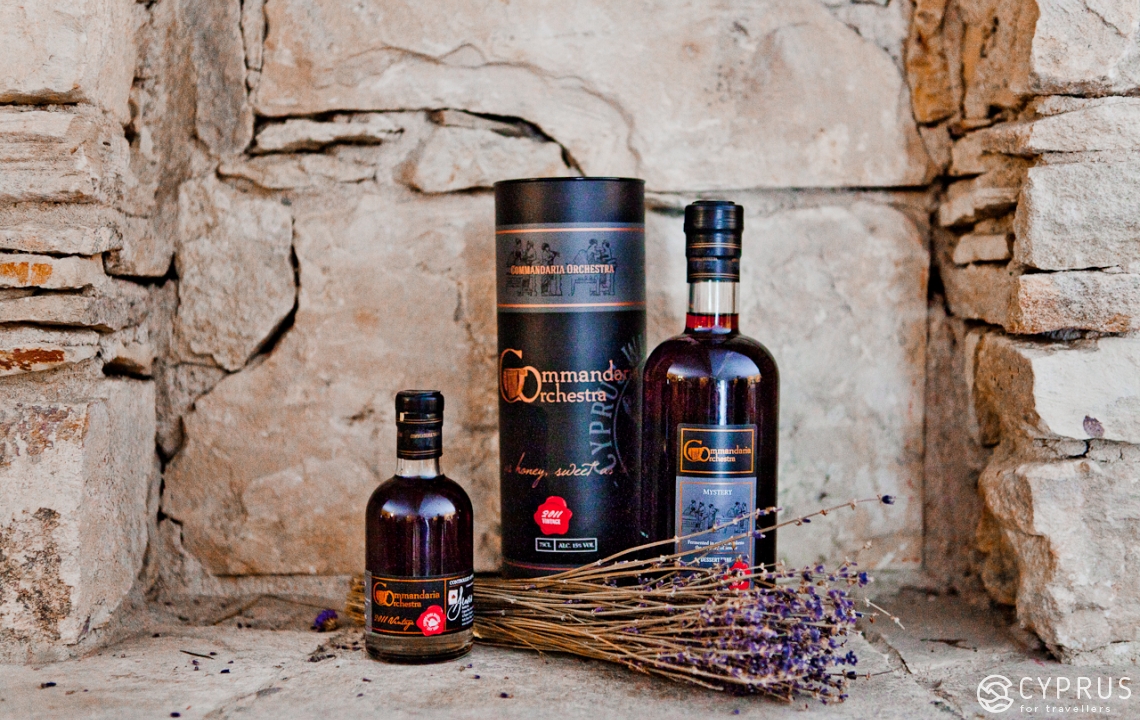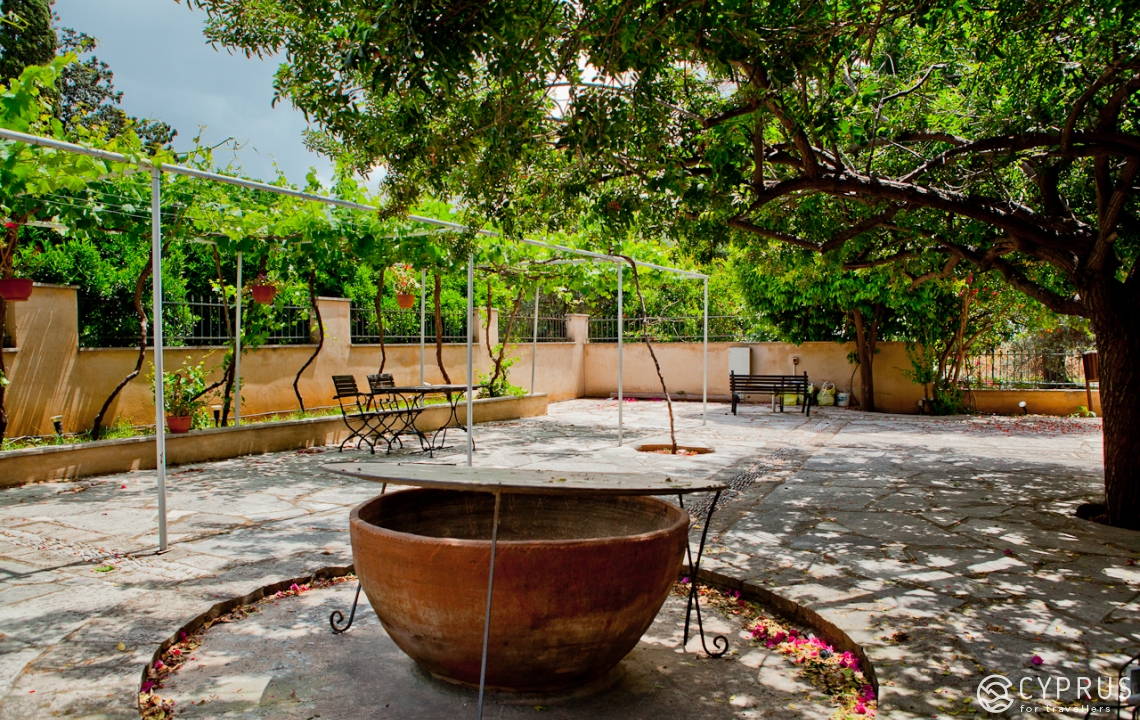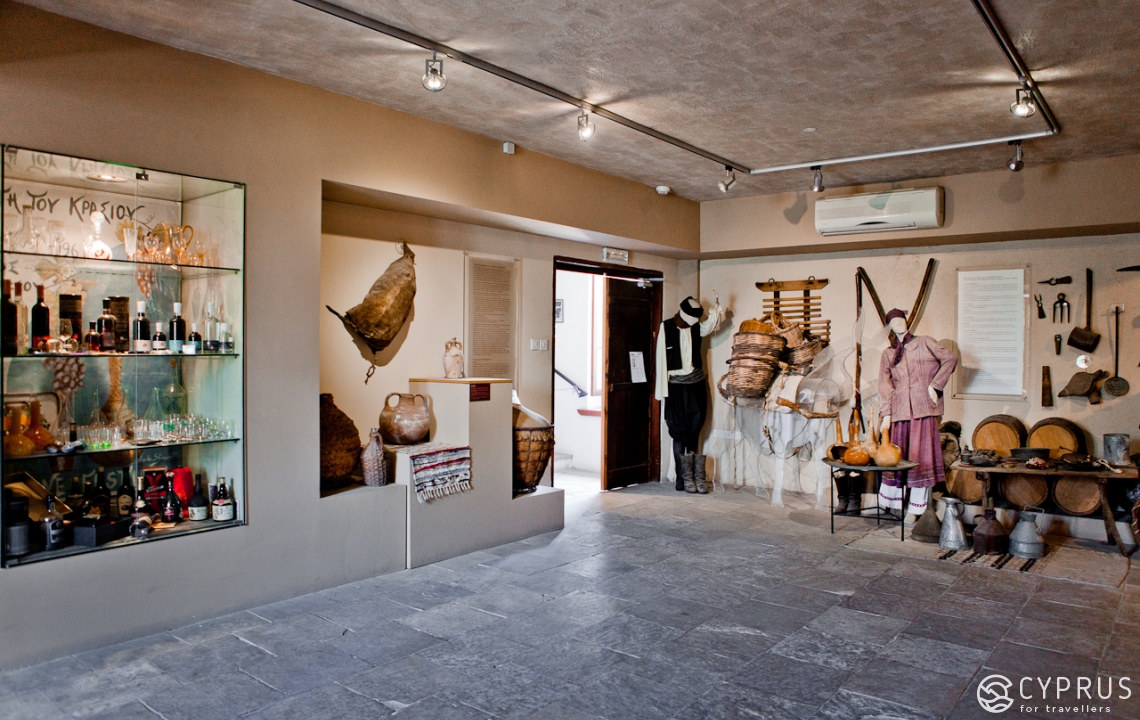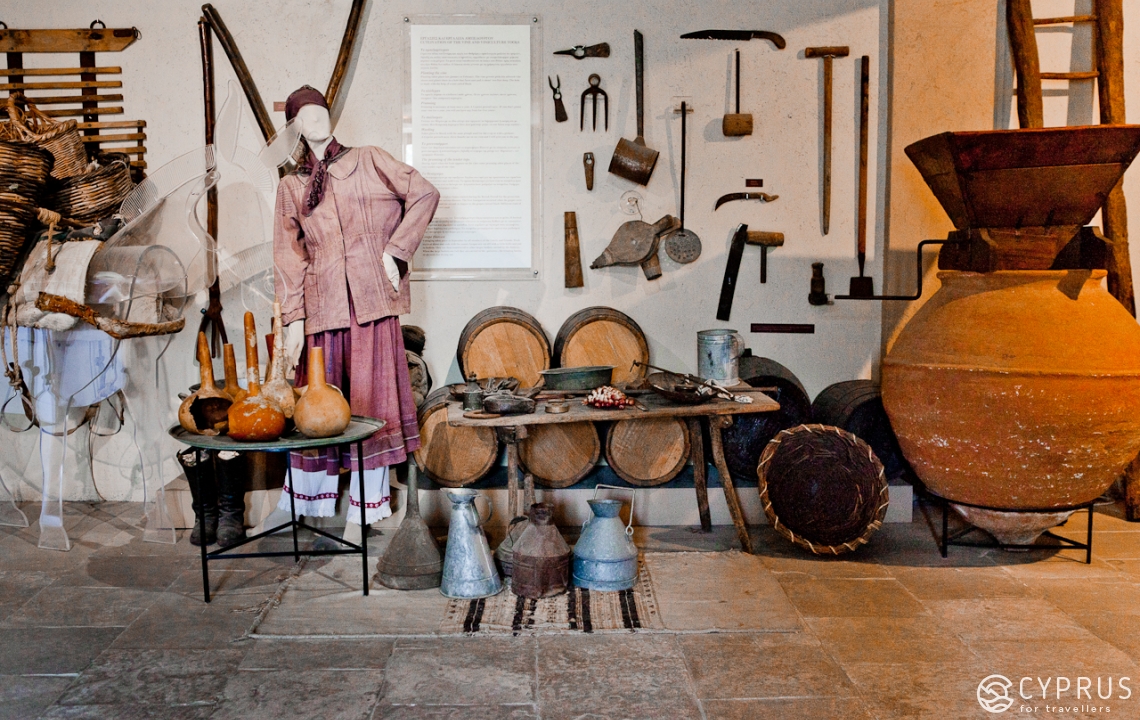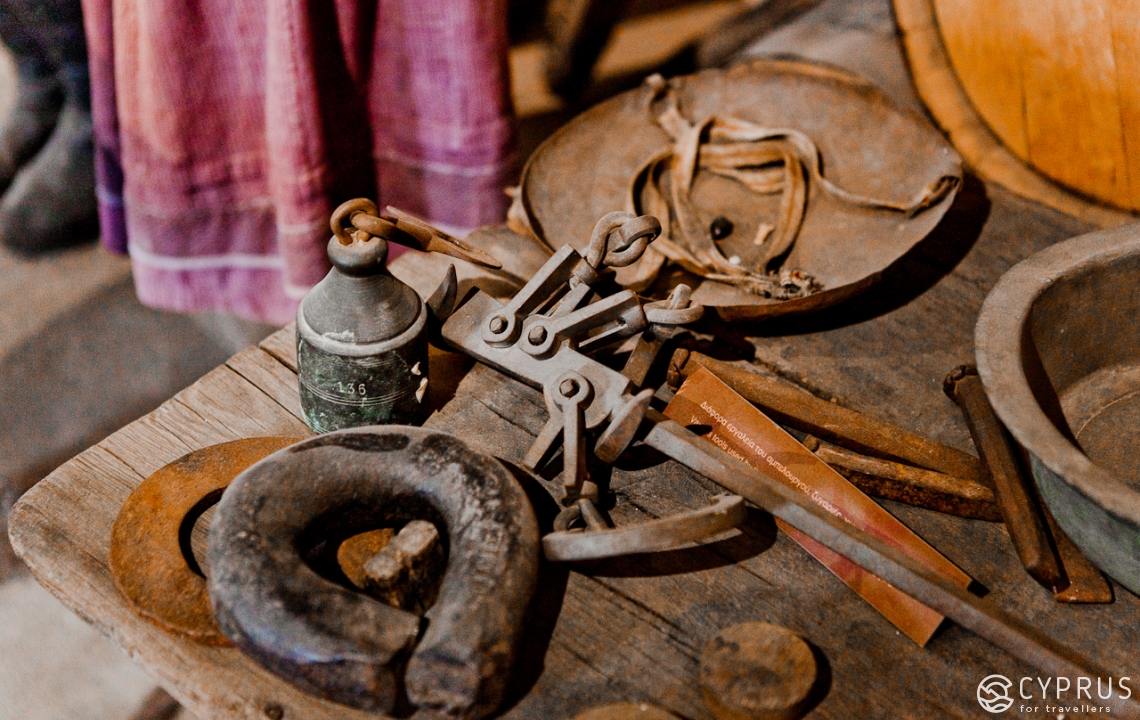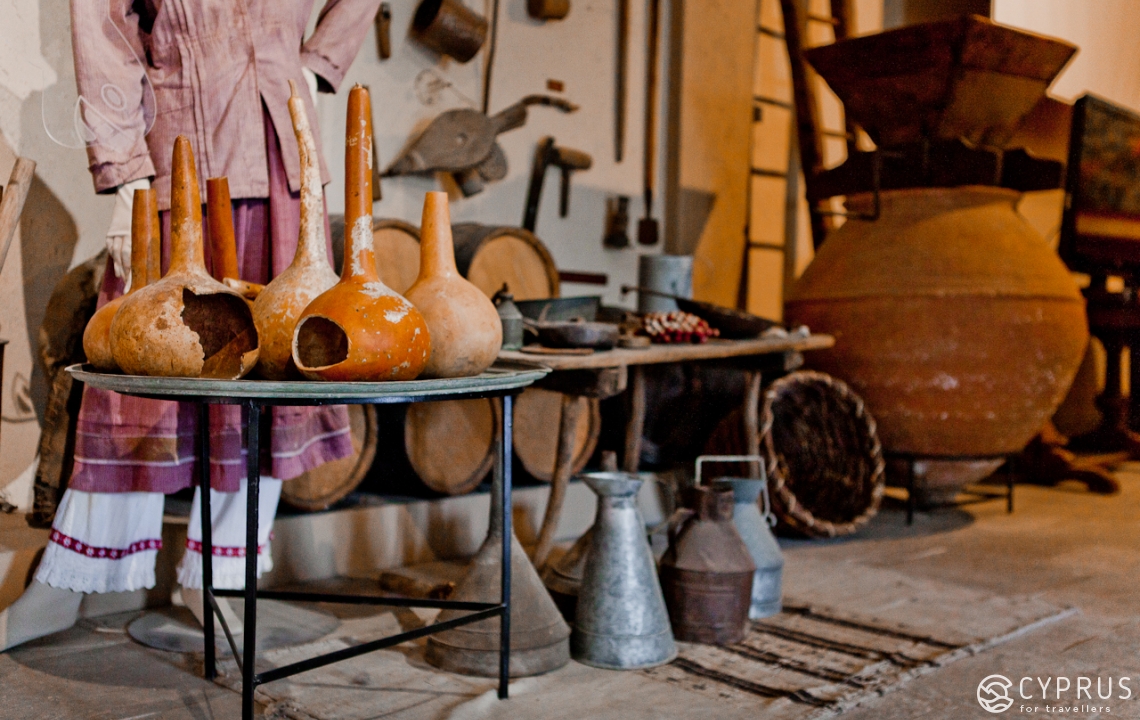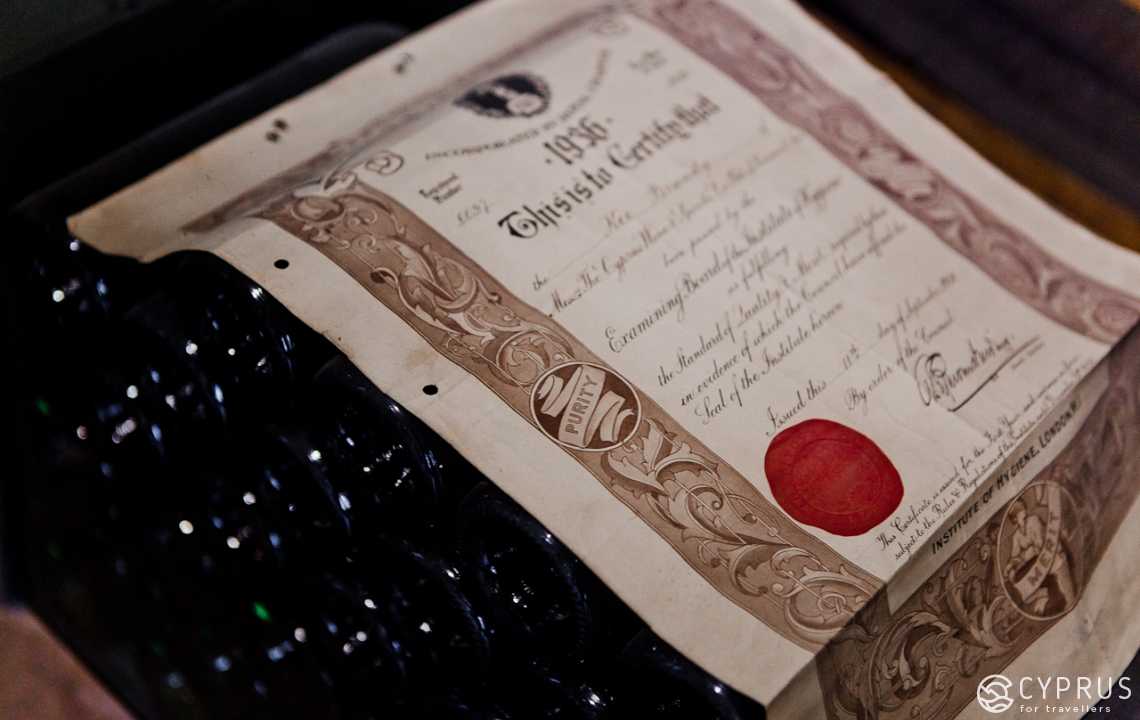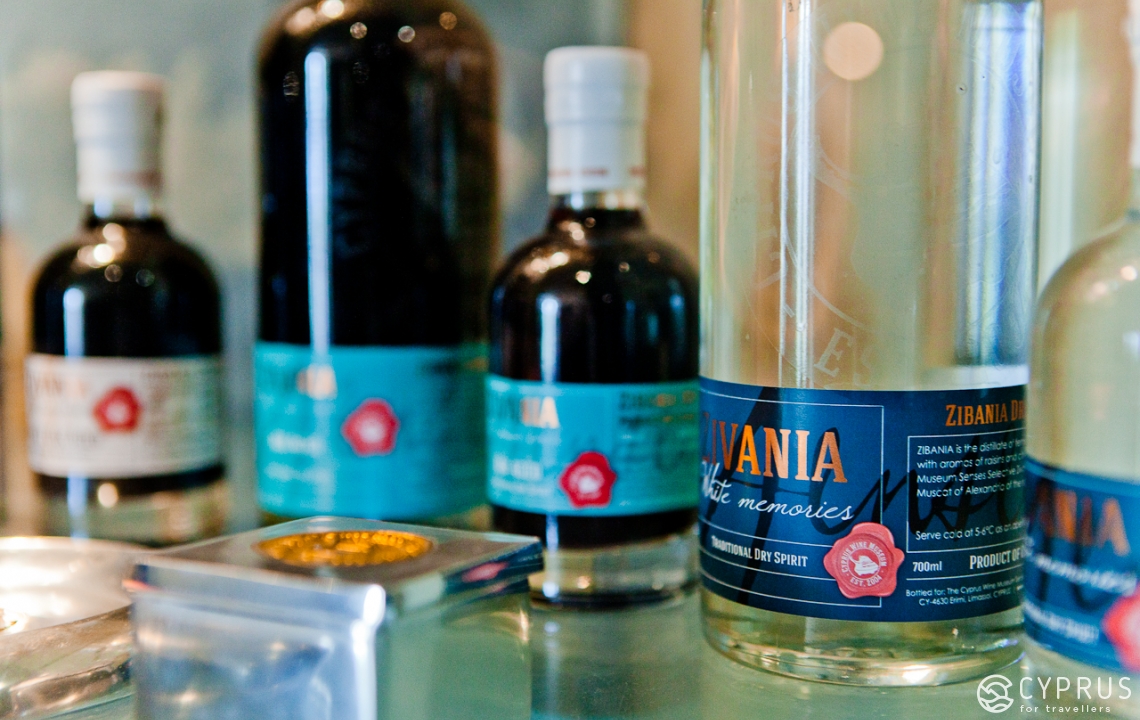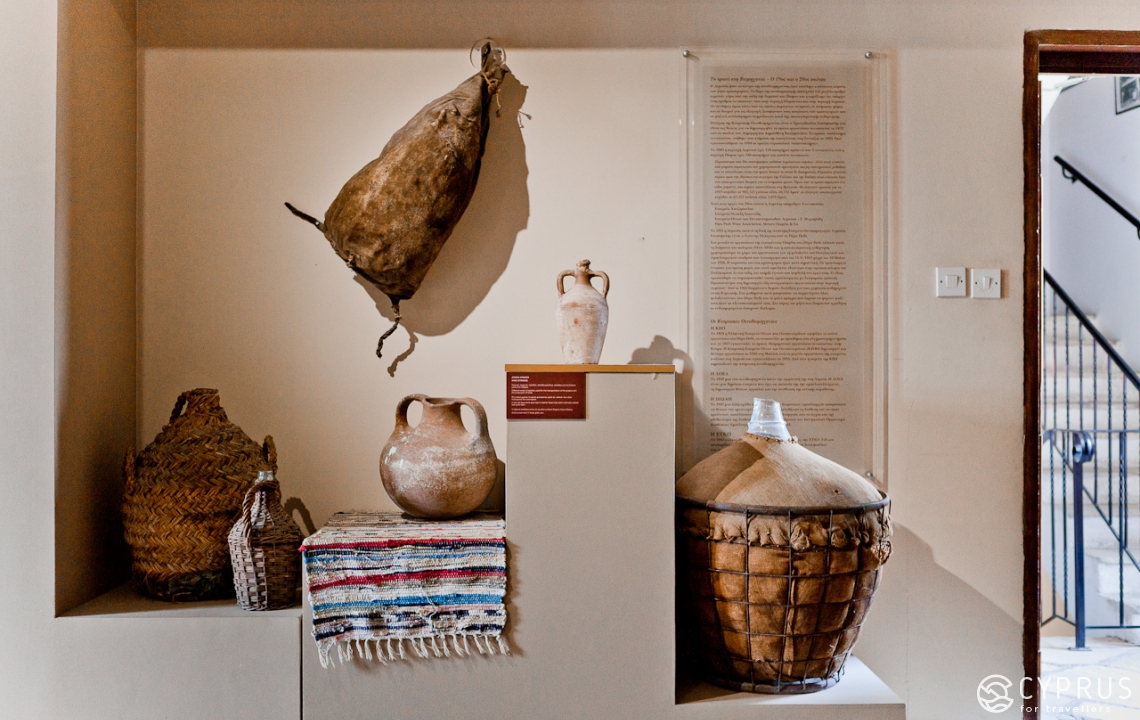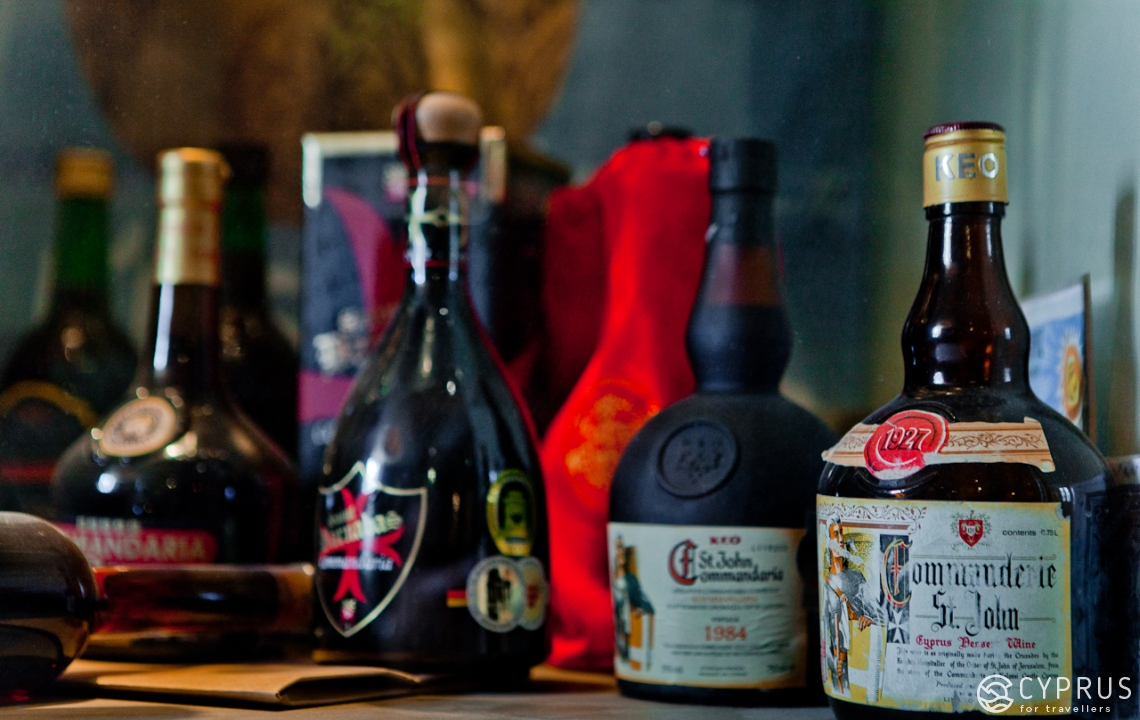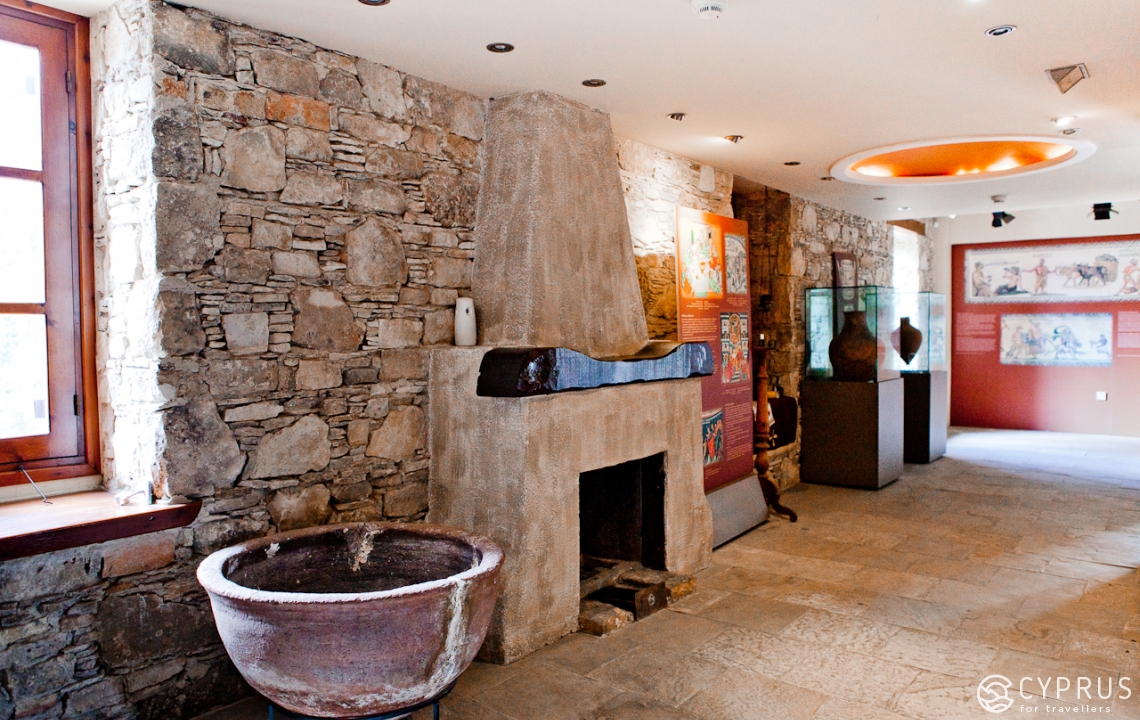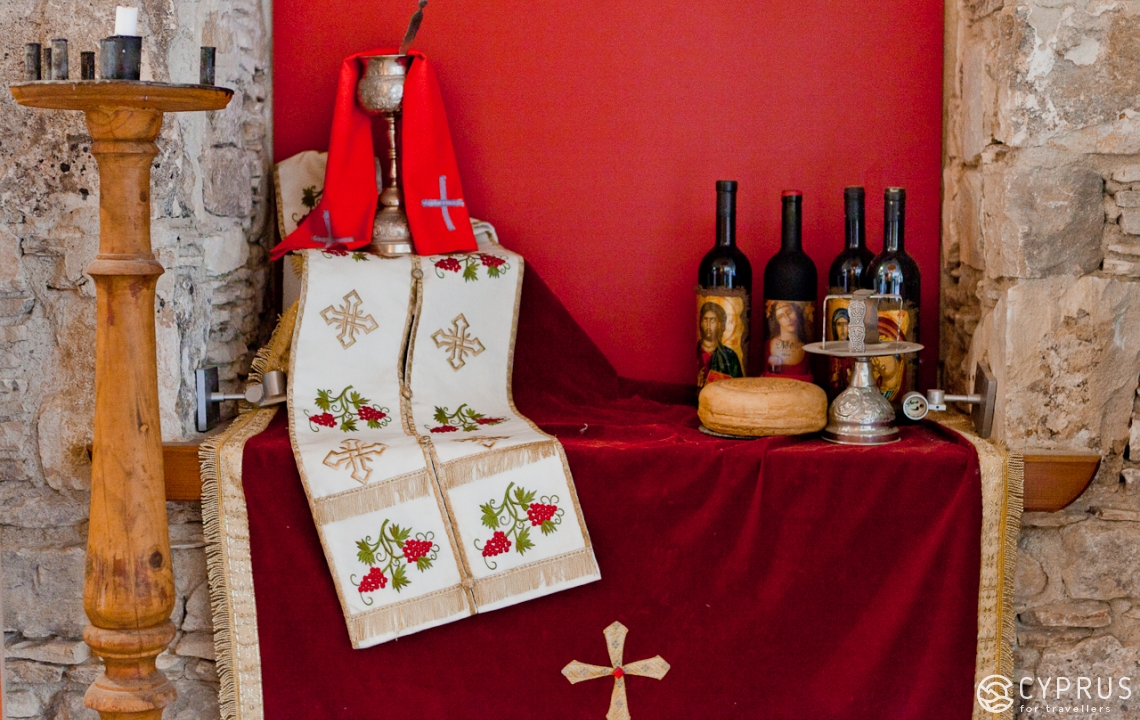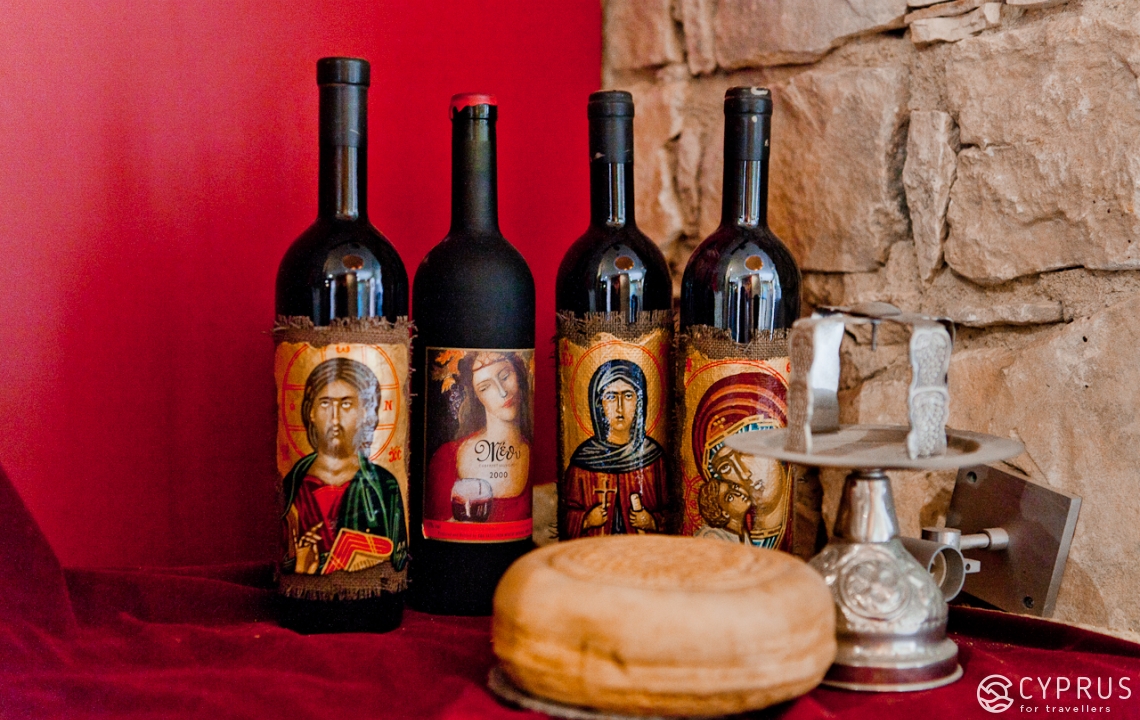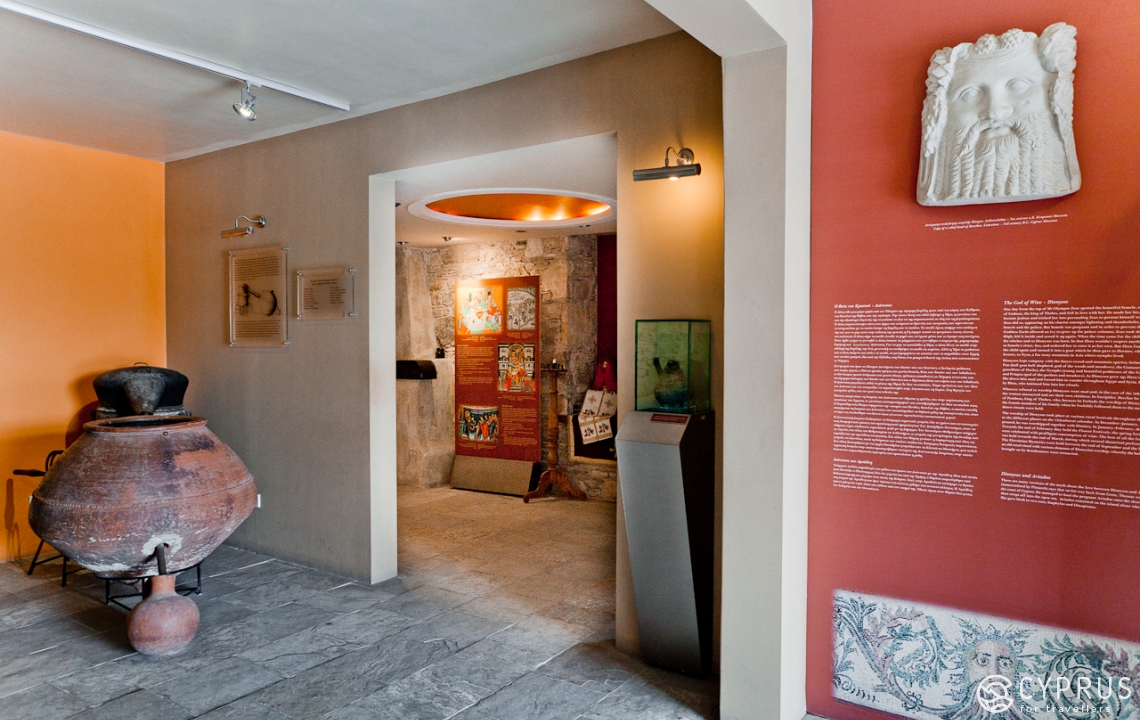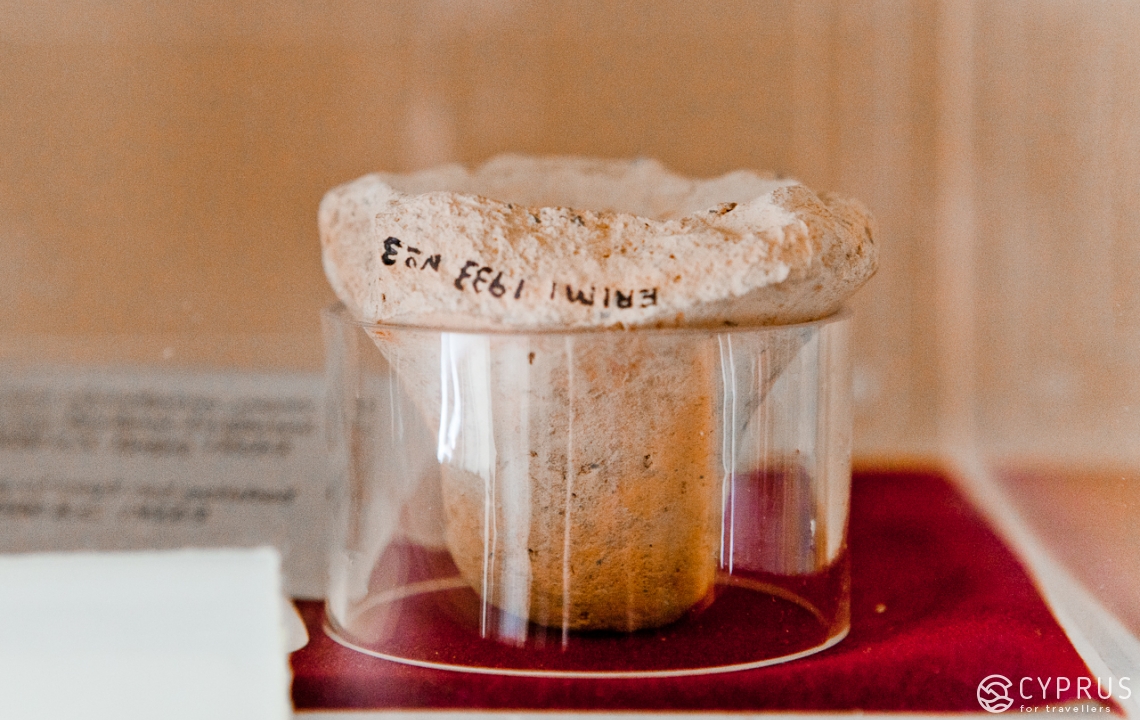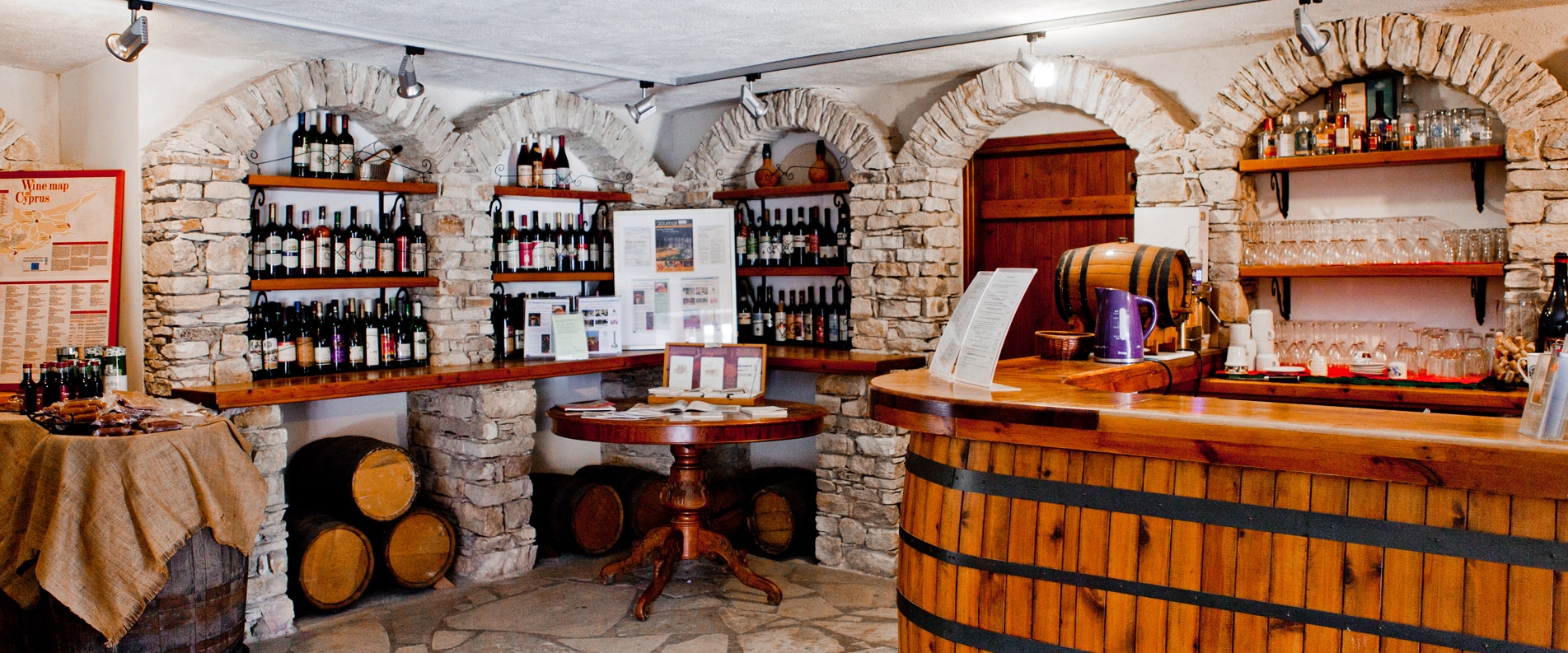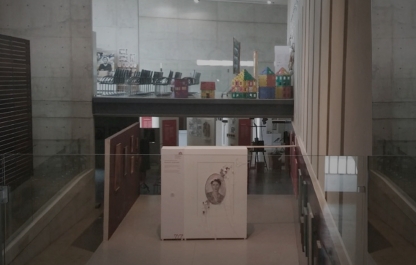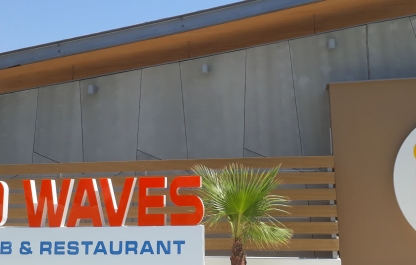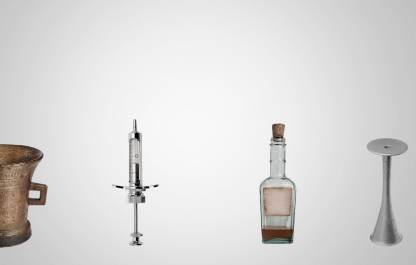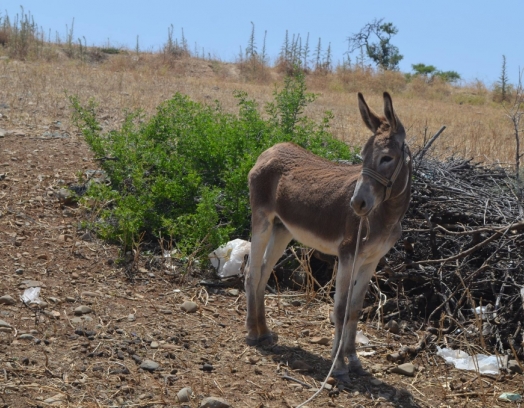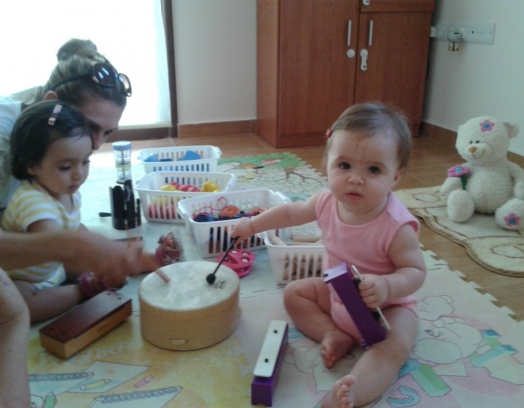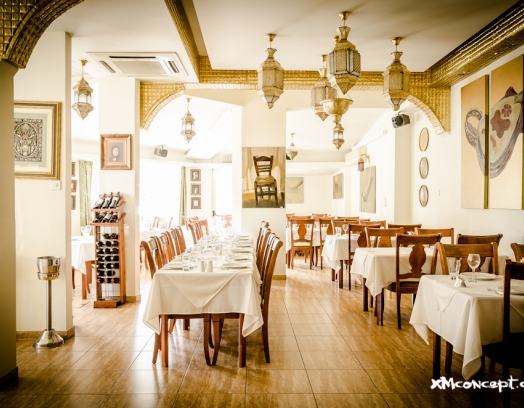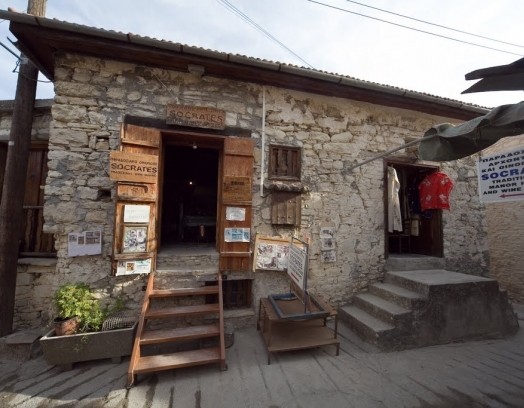Cyprus is one of the oldest winemaking countries in the world. The village of Erimi (Limassol) is located at the crossroads of important events in the history of winemaking. Archeologists had once recovered grape seeds around Sotira (a town located nearby), which served as proof that just like in the neighboring Colossi, this area’s pre-historic residents had once cultivated grapes and produced wine.
The famous Commandaria wine was named after the Commanderies of the Order of Saint John, who lived in the Colossi Castle and the surrounding 60 villages were called the «Great Commanderie».
The large collection of artifacts at the Museum of Wine in Erimi reflects the history of this and other types of wine and explores all steps in the production of local winemaking.
The village
The small, but scenic Erimi village boasts spectacular views of the nearby green hills and sprawling valleys that have become the natural setting for the historic monuments and large archeological sites that surround it. Erimi’s current population is just slightly over 1500 people and is made up of Cypriots and foreigners (mostly British). The village’s history dates back to the middle ages — a fact that is confirmed by the presence of the Church of St. George and the Church of St. Mary.
All the 14 villages in the region that are currently cultivating the variety of grape used to make Commandaria are located 500-900 meters above sea level. The Limassol region has two types of soil: limestone and volcanic soil, but for the most part sand. Precipitation is quite rare, which allows for quite arid growing conditions (local vineyards are not watered). Meanwhile, the area’s high temperatures, the abundance of sunlight and the unique production methods are responsible for the special taste and aroma of this legendary wine.
Commandaria
The methodology behind the production of commandaria — an internationally popular dessert wine — is based on an ancient recipe. The grapes are harvested at the end of September or in the beginning of October, which is later than what is common for other wines (August). This is because the more time the grapes spend in the sun, the sweeter they become. After that, the grapes are laid out on flat roofs where they are sun-dried, following which they are crushed. The juice is then used to make wine. It is fermented in tanks and then poured into barrels or jars, which are then covered with rocks or sealed with wax. The subsequent fermentation process takes 2-4 years.
Today’s wineries that produce commandaria are located in the following villages: Kalo, Chorio, Zoopigi and Aios Constantinos.
One more thing: the grapevines used to make this wine must be at least 4 years old.
Commandaria is either served over ice as an aperitif, or slightly chilled (9-14 ⁰С). Experts say that wine made with two varieties of grape should be served warmer than wine made with only one variety (Xynisteri). The strength of alcohol ranges between 10-20%, but is usually around 15%.
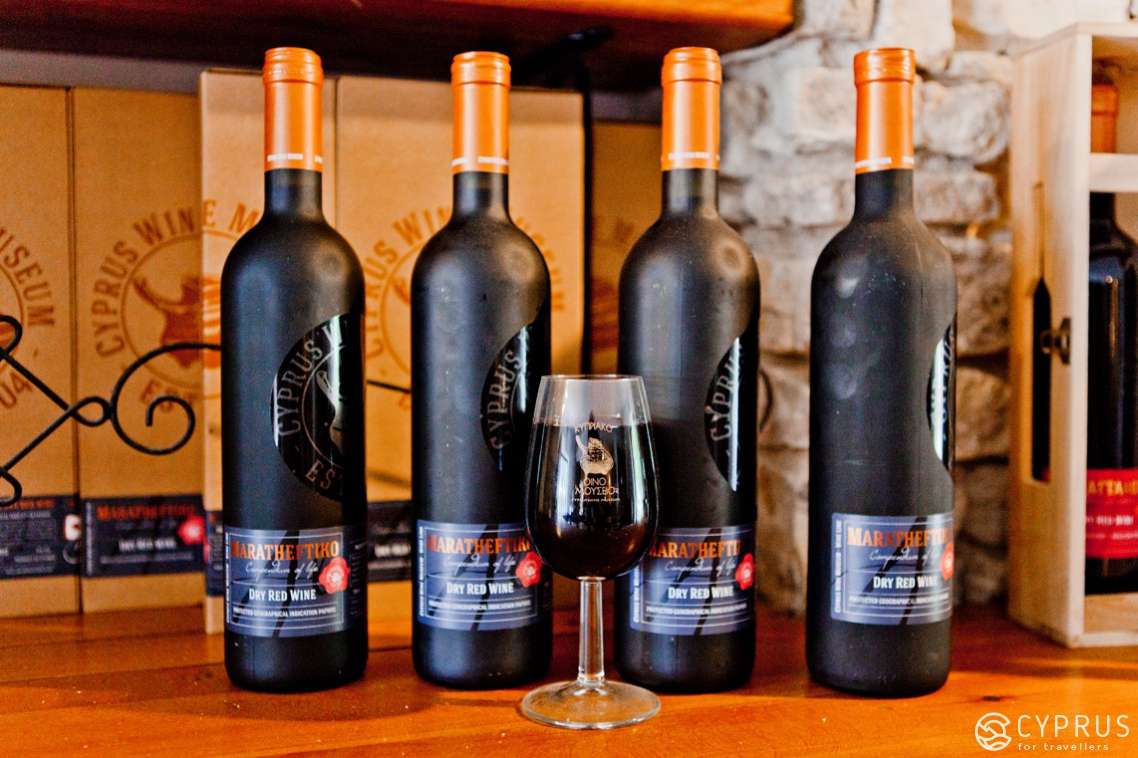
Historic background
Commandaria has been around for a long time.
Head of the Museum of Wine, Francis Guy, has kindly agreed to walk me through museum collections and show me the beautiful garden with a fountain and the amphitheater located outside the museum.
Francis told me right away: «Our island’s wine has a long history. Ancient recipes detailing the creation of «sweet Cypriot wine» have survived to this day and are even used for guidance».
Greek poet Heciod (7th – 8th centuries BC) wrote the following lines in his Works and Days poem: «… as I awake from my sleep, I yearn … to quench my thirst with Cypriot wine». He then shares the secret of a perfect recipe of Commandaria: «Leave the grapes in the sun for 10 days and then 10 nights, following which leave them for 5 more days in the shade and then place them in a jar and leave them there for another 8 days».
Commandaria gained worldwide popularity during the rule of the Order of Saint John. The wine could be found on many rulers’ tables and was considered the «queen of all wine».
The history of winemaking in Cyprus is closely tied to the cult of the Greek goddess Aphrodite and Dionysus, the Greek god of the grape harvest. Cypriot poet Stasinus once described in his magnum opus Cypria a myth about Anios — a father of three daughters. Each of his daughters possessed a magical power to create something. One of them — Oeno — could make wine.
Antique Paphos coins show images of grapevines, while ancient Roman writer Pliny the Elder (author of Naturalis Historia — a famous antique encyclopedia) spoke very highly of Cypriot wine.
The name «Commandaria» comes from the word Commanderie, which referred to the military headquarters of the Commanderies of the Order of Saint John or the Order of Hospitallers (a Christian organization and an Amalfitan hospital, whose mission was to care for the poor and sick pilgrims as well as to protect the Holy Land). In 1191 the Knights Templar purchased the island from Richard the Lion Heart at a price of one hundred thousand bezants.
The following year King Hugo I Luisignan (1194-1218) purchased the island from the Order and founded the Kingdom of Cyprus. He sought to protect the island and helped both orders — Hospitallers and Templars — establish their residences in Cyprus. The central residence of the Hospitallers was located in the Colossi Castle and was known as the «Commanderie» (the castle was built by Hugo I in 1291). The area surrounding the castle was used to grow cane sugar and grapes.
In the 14th century the castle was handed over to the Templars. By the end of the 15th century the surrounding 60 villages were working for the Order and helping it prosper.
But let’s go back in time a little. Cyprus has always been a wine-producing country and up until the 12th century it was known for its «original brand» of wine called «Nama» (which means «spring water» in Greek).
And so the knights took over its production, but decided to considerably improve its recipe and establish trade with Jerusalem. From then onward the wine was called Commandaria and it was produced from two varieties of grape: white (or xynesteri) and black or red (mavro). Thanks to the development of wine trade, Cyprus started to grow wealthy and the knights monopolized the trade and used it to spread Cypriot wine through other countries.
Francis: «By the end of the 15th century Commandarie’s «realm» included 60 villages! So our museum covers a large ground not only geographically but also historically! Things are «saturated» with Commandarie here. We even have Commandaria Orchestra. Meanwhile, archeologists have discovered remains of settlements with signs of vineyards near Erimi. The settlements are thought to date back to the 2 century BC, which would make these vineyards the oldest in Europe».
However, during the Ottoman rule most of the wine production and trade had died down. Incidentally, Alexander Drammon, British consul and author of «Travels through the different Countries of Germany, Italy, Greece, and parts of Asia, as far as the Euphrates» (London, 1754), once lamented the fact that: «the country’s export is only a tenth of what it could be…»
Commandaria made its comeback only during the British rule of the island. Today’s Commandaria is based on a recipe and a production method that have been completely perfected.
An interesting fact: Commandaria is often produced using grapes harvested from the same vineyards that were used centuries ago. Hence, the drink’s superb quality.
Francis: «In 1927 an organization called KEO (Κυπριακή Εταιρία Οίνων — the largest drinks-producing company in Cyprus, based on the union of community chiefs who owned vineyards) emerged on the island. The organization purchased the old St. John factory and began the production of wine. The following years country’s largest export country was the USSR. After the fall of the Soviet Union in 1991, the local wine market also hit stagnation. However, shortly thereafter a wine factory emerged in Pachna village and then 50 more factories were built around the country. Today, commandaria (just like olive oil and carob) is being heavily exported to Europe».
There was something else I wanted to know: «As far as I remember there are two widely popular types of commandaria: «St. John» and «St. Nicholas», yes? But are there other types?»
Francis: «You just named the types that are sold in most shops. First of all, commandaria is now produced not only in its «motherland». The type of wine depends on where the grapes were harvested and how they were processed. There are actually several makers of commandaria, with «St. John» and «St. Nicholas» being the most popular. But there are other makers, some of which are very special and even unique. So, for example, our exhibit includes a so-called vintage commandaria of excellent quality. «St. John» also has a vintage version from the 14th century. Meanwhile, there is also Сenturion 1991 and 2000 by «St. Nicholas». These are all very expensive varieties. You can tell that even the design of the bottle and the label is very different».
It’s worth nothing that commandaria is top-quality wine. At the same time, each brand has its own «consumption purpose». The more inexpensive varieties of this wine are used at Mass.
There is an old joke that goes like this: do you know why priests have stomach problems?»
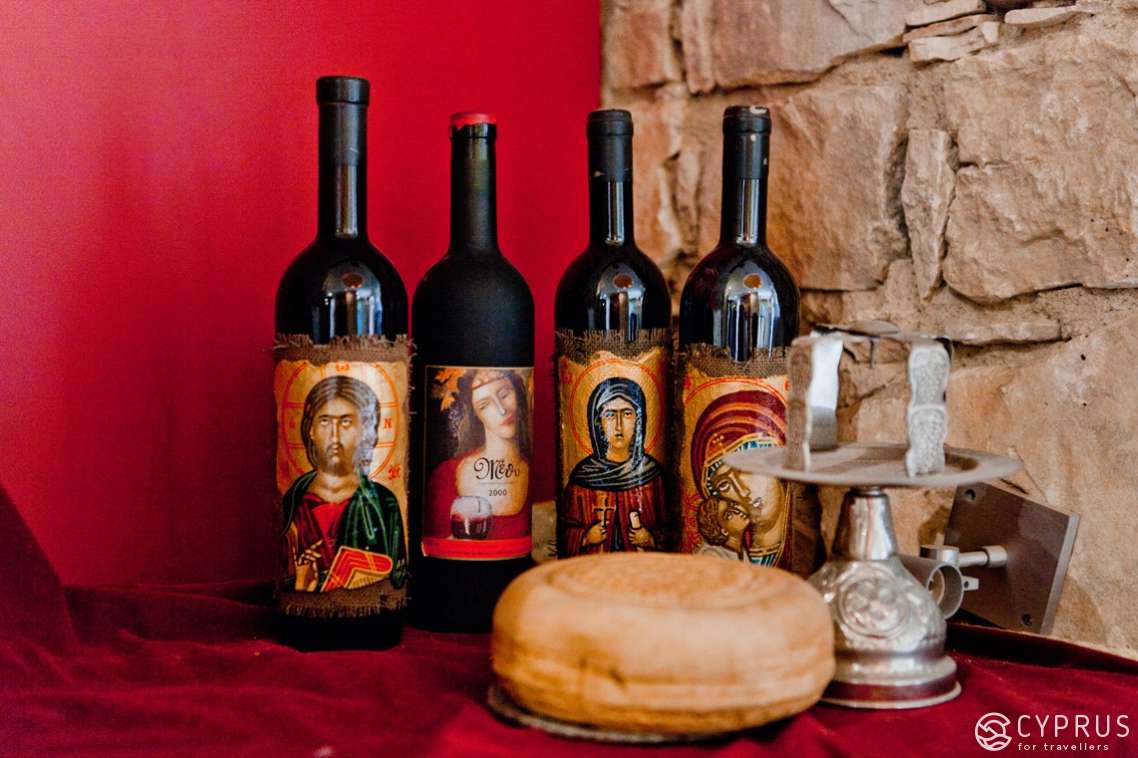
At the museum
The Museum of Wine was founded in 2004. Like the village itself, the museum is located at the crossroads of key «wine paths», including the old route from Limassol to Paphos as well as the roads that run from the coast to the mountains. In addition to that, the Kourion Archeological Site and the Temple of Apollo are located only minutes away. The museum was founded by the Guy family (Anastasia Guy — the main founder — is a musician and a composer). The mission was to draw the public’s attention to the significance of winemaking in general and Commandaria in particular and set their story against the backdrop of Cyprus history.
The museum is located inside a spacious two-story building, which used to serve as an inn for wine traders who came from the nearby villages, but was later turned into the Knightsbridge Steak House. After years spent renovating and repairing the building (1998-2004), the museum finally opened its exhibition halls, tasting room and a gourmet boutique (St. Illarion Hall) to the public. The main theme of the retrospective is the role of wine in the history and culture of Cyprus.
You might want to know why we say that the Museum is the center of the «great wine route» of Cyprus? This is all due to one archeological discovery, which was made in the area, namely a flask that dates back to 4,000BC. Fragments of this flask, which was made of clay, were found together with other artifacts back in 1933 by Porfirius Dikeus — a famous Cypriot scientist and «the father of Cypriot archeology» (1904-1971). The fragments were later analyzed by Maria Belgiorno, who was able to use them to recreate 18 vessels and proved that the island’s winemaking tradition is more than five and a half thousand years old. Her work confirmed the idea that Cyprus was one of the first wine-producing countries in the world.
Francis: «… the fragment of the flask, which was found in Erimi during the archeological dig of a Chalcholithic settlement, you can see in the display window that Dikeus wanted to know why this shape of the pitcher (which today we call flasks) was used for such a long period of time. Later another scientist from Florence (M. Belgiorno) discovered that this shape (round with small «feet», it resembles a dried out gourd) allowed for easy shipment. This in turn proves that we have been exporting wine from our region for a very long time.
Moving forward, you will see the pitcher’s shape evolve (we stop in front of the cone-shaped pitchers, which were kept in the storage space located under the floor or placed in the soil) from an archaic period to the Hellenistic period. Just like pots, pitchers were used to store a variety of foods, such as wine, oil and grains. The pitchers were buried underground to better preserve their contents».
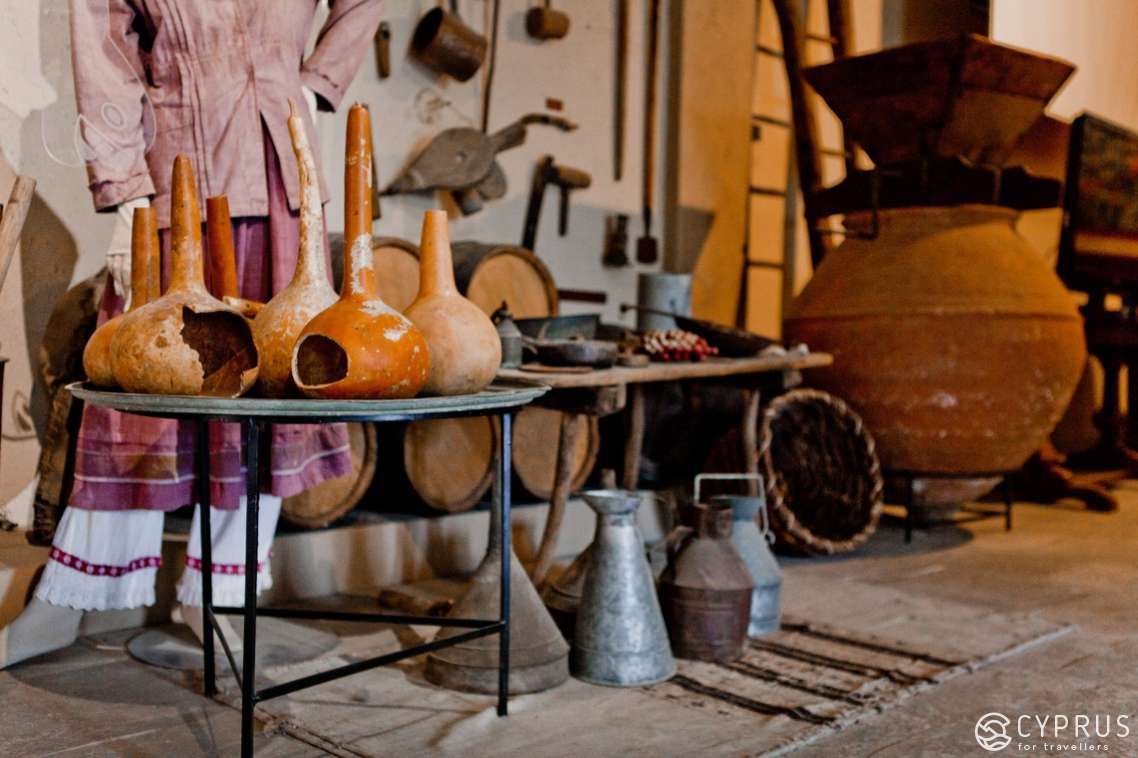
As soon as they enter the Museum, visitors are invited to watch a film, whose original score — «Amorous Song» — was composed by Anastasia Guy and features lyrics by Athena Haralimbidis. The score is performed by Commandaria Orchestra, with Francis Guy as conductor and Marios Andreu as lead singer. At the end of the screening visitors are invited to see the main exhibition, which is also the largest one in Cyprus. The exhibition is a journey through centuries of Cypriot winemaking.
The first exhibition hall contains a map of the two largest winemaking centers — Limassol and Paphos — which are home to more than 50 wineries and 4 large wine factories (brands): KEO, LOEL, SODAР and ETKO. «The Commandaria complex» is presented in the form of 14 villages on the southern slop of the Troodos Mountains (beginning on March 2, 1990).
Museum’s permanent exhibition includes antique and ancient pots, pitchers (pithos) and vessels from different time periods (these are on loan from the Museum of Cyprus), medieval chalices and drinking cups (from Pieridis Museum), Anastasia Guy’s private collection, old archival documents and tools — everything to illustrate the production, preservation and consumption of wine in the past. 200 different varieties of wine are on display. This wine was produced at 38 different wineries using local grape varieties (of which there are only 12, including Ofthalmo, Morokanella, Malaga, Lefkada and others) as well as foreign varieties: Shiraz, Cabernet Sauvignon, Grenache Noir and others.
The photos located inside the display windows depict traditional and modern technology used in wine production. The audio-visual ambience is spectacular: I had a great time listening to the medieval soundtrack when Francis confessed to writing the score based on old melodies. He said it was a way to expand his orchestra’s repertoire.
There is a collection of antique household items, glass dishware (for the consumption of commandaria, zivania and other alcoholic beverages produced in Cyprus), mannequins dressed in traditional clothing worn by local villagers as well as numerous other details meant to cover all facets of life on the island, ranging from its culture (mythology, art and folklore) to the economy.
A large number of items are obviously dedicated to Dionysus (also known as Bacchus), the god of the grape harvest, winemaking and all the rituals that surround it. According to one version from Greek mythology, Dionysus was married to Ariadne, whom he had rescued from treacherous Theseus.
A painting hangs on the wall (the original is a mosaic from the House of Dionysus in Paleo Paphos) depicting a scene in which Dionysus appears in Athens much to the discontent of the king of Athens.
We continue our walk through the exhibition halls and one by one antique treasures reveal themselves through the dim light of the museum as if emerging from the past. There are very few visitors.
I ask: «How often do you get visitors?»
Francis: «We are going through a difficult period right now. We get asked a lot: when does the peak season start in Cyprus? However, this does not really apply to museums and small shops selling traditional crafts.
For example, there is the «Colossi package», which includes a visit to our museum. But it is only offered at the «all-inclusive» hotels, where guests are often reluctant to go on any tours. There are others, like the Four Seasons, which offers exclusive wine tasting tours at our museum».
Myself: «If I remember correctly, at the beginning of 2016 there was talk about the government creating incentives for tourists to step outside the «all-inclusive» comfort zone. Has anything been done in this regard?»
Francis: «The problem is that the Cyprus hotel administration is very powerful and is not too eager to let go of their tourists».
We go back to examining the exhibition.
The following section is dedicated to the archeological exploration of Erimi and the famous Cypriot archeologist Dr. Pavlos Flourentzos who researched the area.
We continue our tour: a significant part of the exhibition is dedicated to the production of Zivania (Ζιβανία in Greek) — a popular kind of vodka, which is made with grapes (locals call it brandy). Zivania has been produced since the end of the 15th century.
«According to the rules, this traditional drink must contain at least 44% alcohol», Francis adds.
Zivania
Zivania can be both factory-manufactured and made at home using a special device (called «καζάνι» in Greek), which looks like a clay vessel filled with cold water and with a tube attached to it. Once the grapes are fermented and boiled, the vapor escapes through the tube, where it cools down, condenses and turns into drops of zivania.
For those who are interested: zivania is a strong drink that can contain up to 52% alcohol. Villagers used to place the fermented substance in a storage room, following which they would simmer and distill it.
I ask: «How much time does it take to make zivania?» Francis says that there are two types of zivania: one that also contains grape juice, which has a richer taste, and the simpler kind that is made with pomace or «zivana», which is essentially grape-flavored alcohol. Zivania takes on average a couple of hours to make.
Francis: «The kind of zivania that is popular abroad is obviously the first kind. It is produced based on a secret recipe from the 14th century. Cyprus also produces a variety of flavorful muscat that is also popular abroad».
We finish our walk through the museum and I thank the director for the fascinating tour.
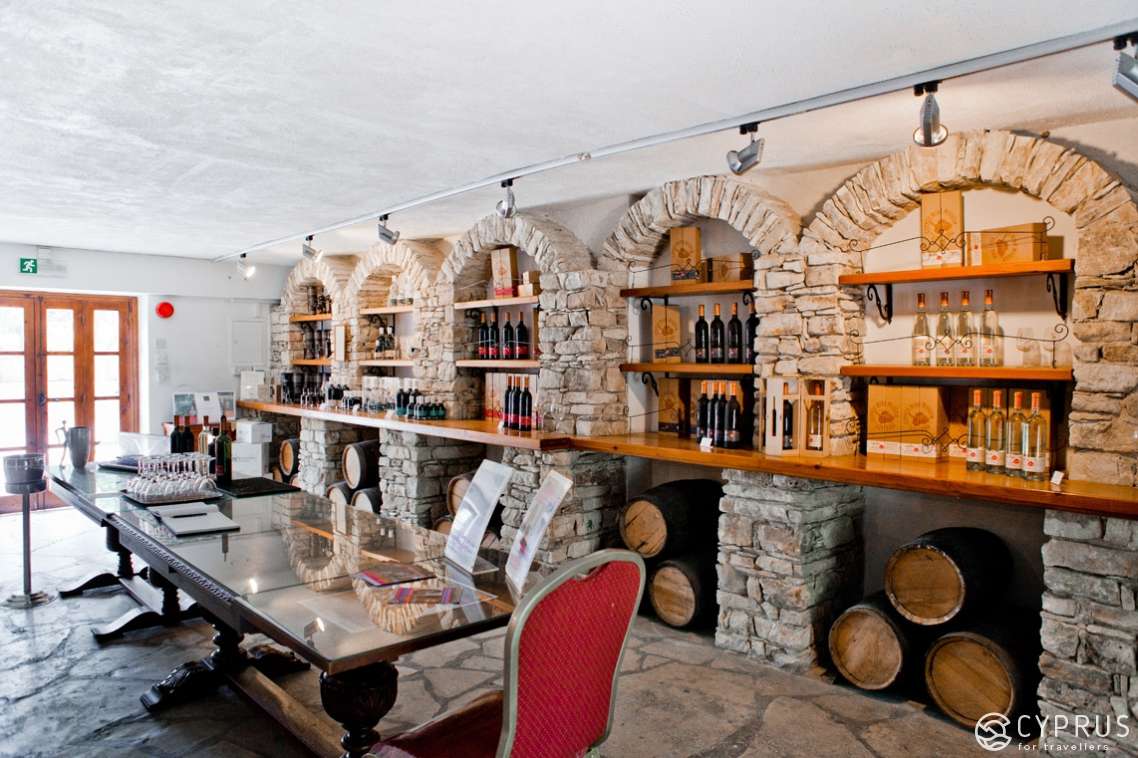
Information
Visitors are offered several types of tours:
€4.00 — includes a tour of the Museum and the Hall of St. Illarion, and a guided tour of «wine roads». Wine tasting not included
€5.00 — includes a tour of the Museum and the Hall of St. Illarion, a guided tour of «wine roads» and an audio-visual experience. The package includes a tasting of two local wines and commandaria, which are served with local bread and raisins.
€7.00 — includes a tour of the Museum and the Hall of St. Illarion, a guided tour of «wine roads» and an audio-visual experience. The package includes a tasting of two local wines and commandaria, which are served with local bread, raisins, kiofteri (traditional rectangular-shaped sweets made of grape juice), and halloumi. Visitors are also offered a tasting of zivania.
With its unique collection, a rich cultural life and music events that include performances by the museum’s own orchestra, the Wine Museum is an object of pride not only for the village, but for the entire island too.
The museum has several large sponsors: Cyprus Tourist Organisation, the Ministry of Communication and Public Service, Museum of Cyprus, Erimi’s Public Council, KEO Wine Industry and others.
Address: 42 Pafos Street
Erimi CY-4630
Limassol, Cyprus
Telephone: +357 25 873 808, +357 25 873 809
Fax: +357 25 821 718
E-mail: cypruswinemuseum@cytanet.com.cy
www.cypruswinemuseum.com
See you soon!
Written by: Evgeniya Kondakova-Teodorou.
